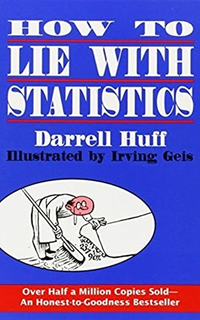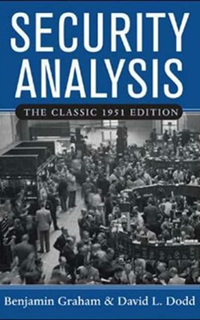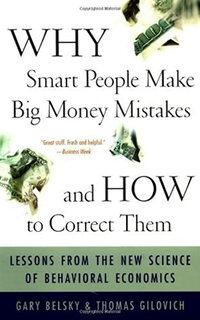Collection
Best Books For Investors: A Short Shelf
"I’m often asked, especially as the holiday gift-giving season approaches, which books I recommend for investors.
I haven’t kept exact count, of course, but over the past quarter-century I have surely read (or tried to read) a couple thousand books on investing. Nearly all of them were a tragic waste of good trees. Most weren’t worth reading even a few pages of.
So I feel strongly that the usual article on “best investing books” has far too many entries and ends up suggesting good books you might read, rather than recommending great books you must read.
Here’s a list that I would still be comfortable with decades from now. Every book below has already stood the test of time and, I’m confident, will remain useful for generations to come. You will quickly note that some aren’t about investing at all. But they all will help teach you how to think more clearly, which is the only way to become a wiser and better investor. I’ve listed them alphabetically by author." - Jason Zweig
- Curated in Best Books For Investors: A Short Shelf
With unprecedented access to Buffett, Schroeder crafted a sensitive, personal and insightful profile, focusing even more on him as a person than as an investor — and detailing the remarkable sacrifices he made along the way. If you read it alongside Lowenstein’s Buffett, you will have an even deeper understanding of the master.
- Curated in Best Books For Investors: A Short Shelf
First published in 1940, this is the funniest book ever written about investing — and one of the wisest. Schwed, a veteran of Wall Street who survived the Crash of 1929, knew exactly how the markets worked back then. Nothing has changed. Turning to any page at random, you will find gleefully sarcastic observations that ring at least as true today as they did three-quarters of a century ago. My favorite: “At the end of the day [fund managers] take all the money and throw it up in the air. Everything that sticks to the ceiling belongs to the clients.”
- Curated in Best Books For Investors: A Short Shelf
Neither light reading nor cheap (it’s hard to find online for less than about $75), this book is the most thoughtful and objective analysis of the long-term returns on stocks, bonds, cash and inflation available anywhere, purged of the pom-pom waving and statistical biases that contaminate other books on the subject. The sober conclusion here: Stocks are likely, although not certain, to be the highest-performing asset over the long run. But if you overpay at the top of a bull market, your future returns on stocks will probably be poor.

- Curated in Best Books For Investors: A Short Shelf
These captivating oral histories of the great Nobel Prize-winning physicist ostensibly have nothing to do with investing. In my view, however, the three qualities an investor needs above all others are independence, skepticism and emotional self-control. Reading Feynman’s recollections of his career of intellectual discovery, you’ll see how hard he worked at honing his skepticism and learning to think for himself. You’ll also be inspired to try emulating him in your own way.
- Curated in Best Books For Investors: A Short Shelf
This book remains the most comprehensive and illuminating study of Warren Buffett’s investing and analytical methods, covering his career in remarkable detail up until the mid-1990s. If you read it in conjunction with Alice Schroeder’s The Snowball, you will have a fuller grasp on what makes the world’s greatest investor tick.

- Curated in Best Books For Investors: A Short Shelf
This puckish riff on how math can be manipulated is only 142 pages; most people could read it on a train ride or two, or in an afternoon at the beach. As light as the book is, however, it is nevertheless profound. In one short take after another, Huff picks apart the ways in which marketers use statistics, charts, graphics and other ways of presenting numbers to baffle and trick the public. The chapter “How to Talk Back to a Statistic” is a brilliant step-by-step guide to figuring out how someone is trying to deceive you with data.

- Curated in Best Books For Investors: A Short Shelf
In clear, simple prose, Belsky and Gilovich explain some of the most common quirks that cause people to make foolish financial decisions. If you read this book, you should be able to recognize most of them in yourself and have a fighting chance of counteracting some of them. Otherwise, you will end up learning about your cognitive shortcomings the hard way: at the Wall Street campus of the School of Hard Knocks.
- Curated in Best Books For Investors: A Short Shelf
Successful investing isn’t about outsmarting the next guy, but rather about minimizing your own stupidity. Psychologist Daniel Kahneman, who shared the Nobel Prize in Economics in 2oo2, probably understands how the human mind works better than anyone else alive. This book can make you think more deeply about how you think than you ever thought possible. As Kahneman would be the first to say, that can’t inoculate you completely against your own flaws. But it can’t hurt, and it might well help. (Disclosure: I helped Kahneman research, write and edit the book, although I don’t earn any royalties from it.)
- Curated in Best Books For Investors: A Short Shelf
In the late 1960s, the stock market was dominated by fast-talking, fast-trading young whizzes. The former money manager George J.W. Goodman, who wrote under the pen name “Adam Smith,” christened them “gunslingers.” In this marvelously entertaining book, Goodman skewers the pretensions, guesswork and sheer hogwash of professional money management. Reading his mockery can help sharpen your own skepticism toward the next great new investing idea — which almost certainly will turn out to be neither great nor new.








